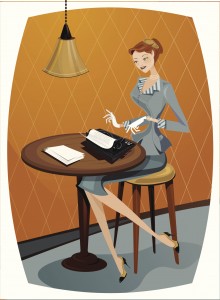Writing press releases: 7 tips to improve your copy
 Writing a press release doesn’t have to be hard. Some writers, intimidated by the thought of writing copy that eventually will be reviewed by professional reporters and editors, make the mistake of trying to “elevate” their writing. Long words replace short ones, sentences become more complex and the message gets lost amid a sea of technical terminology.
Writing a press release doesn’t have to be hard. Some writers, intimidated by the thought of writing copy that eventually will be reviewed by professional reporters and editors, make the mistake of trying to “elevate” their writing. Long words replace short ones, sentences become more complex and the message gets lost amid a sea of technical terminology.
By keeping in mind a few simple guidelines, writers can produce shorter, more effective press releases that emphasize clear communication over impressing an editor. Employ these few simple tips, and you may just do both:
Start strong
Your lead, or opening paragraph, doesn’t have to be fancy or long-winded to get results. It should, however, follow the “inverted pyramid” formula of placing the most important information up top, followed by less important and finally background information. Reporters and editors are busy; don’t make them hunt through your copy to find your news.
Be direct
Use clear, concise language and keep technical terms and industry jargon to a minimum. Remember, you’re ultimately writing for a lay audience, not to impress an editor or your industry peers. Also, avoid backing into sentences with openings such as, “In a move designed to strengthen interdepartmental synergy, Acme Widget Company today announced…” Announce your news first; you can explain the “why” in paragraph two or three.
Use active voice
Repeat after me: Subject, verb, object. For some reason, people think using the passive voice makes their writing sound more elegant or intelligent. They’re wrong. “John threw the ball” is a better sentence than “The ball was thrown by John.” After writing your press release, review your copy and wherever possible, rewrite any passive sentences in the active voice. You’ll be amazed at how much stronger your message sounds.
Stick to third person
Unlike a blog post, web copy or paid advertisement, a press release does not allow the sender to address his audience directly. Your message must first make it past the media gatekeepers, who if they publish your information won’t want to be seen as representing your interests. Avoid addressing the reader as “you,” therefore, and use the third person:
Before: “Are you looking to purchase a foreclosed home? We’re having an auction next month and you’re invited!”
After: “Realty Pros Appraisals and Auctioneers will hold a public auction of six foreclosed single-family homes at 2 p.m. Thursday May 8 at the company’s headquarters, located at…”
Avoid adjectives
Is your product really the most “amazing,” “tremendous,” “best” invention in the history of mankind? I didn’t think so. Padding your press release with adjectives, or fluff, damages your credibility with the media. Superlatives are an immediate red flag to editors, who will begin to question the accuracy of your other statements. So hold the fluff and stick to factual statements that are supported by data or other easily confirmed evidence.
Use quotes strategically
Quotations are the unsung heroes of the press release. They’re also the most misused element of promotional writing. Quotations inject life and energy into dull and unimaginative topics – so don’t waste them on bland, scripted sentiments that add little value to your message. Use quotes to communicate key points about your product or service and attribute them to your CEO or other designated spokesperson.
Still itching to use those superlatives? Here’s your chance: Adjectives are allowed when used in quotes, because the media understands that a quotation is someone’s subjective opinion, not a blanket statement of fact. The sentence, “Acme’s revolutionary razors are the best, most unique products on the market today,” will never make it past an editor. But the quotation, “We believe Acme’s revolutionary design and unique six-blade construction set our product apart from every other razor on the market today,” when attributed to your CEO, just might.
End strong
While the inverted pyramid format is designed to enable editors to cut copy from the bottom if needed, it doesn’t hurt to end strong when possible. Quotes are a great way to end a story or press release – provided, again, that they are substantive and contribute to your message. When ending with a quote, however, place the attribution in the middle or even at the beginning of the sentence to avoid concluding your release on an anticlimactic downbeat.
Before: “Our veterans are our heroes; we owe it to them to maintain their benefits,” Johnson said.
After: “Our veterans are our heroes,” Johnson said. “We owe it to them to maintain their benefits.”
Hear the difference?








